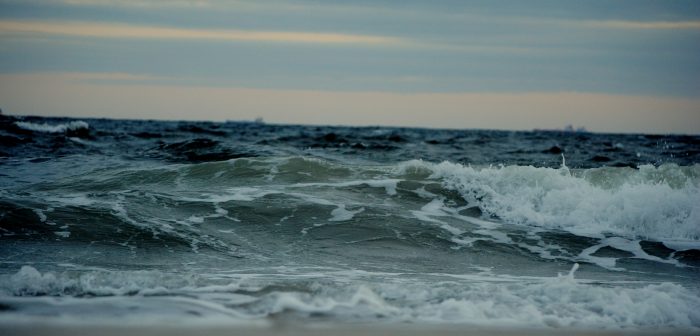
Software
CACTUS
Code for Axial and Cross-flow TUrbine Simulation (CACTUS) is a turbine performance simulation code, based on a free wake vortex method, under development at Sandia National Laboratories as part of a Department of Energy program to study marine hydrokinetic (MHK) devices. The current effort builds upon work previously done at Sandia in the area of vertical axis wind turbine simulation and aims to add models to handle generic device geometry and physical models specific to the marine environment.
DTOcean
DTOcean is open source collaborative development software for wave and tidal array design tools that considers the entire ocean energy farm throughout its lifecycle. The software helps to find optimal array designs that minimize the levelized cost of energy (LCOE) and identify cost drivers, allowing the industry to capably progress towards economic viability. DTOcean v1.0 software was developed in collaboration with a large consortium of European partners. Sandia and their partner Data Only Greater made enhancements in DTOcean v2.0 (maintained by Data Only Greater). For more information about related efforts, view the DTOcean+ site.
Contact: Jesse Roberts
MHKiT
Marine and HydroKinetic Toolkit (MHKiT) provides robust and verified functions in both Python and MATLAB to standardize marine renewable energy data processing and analysis. Calculations and visualizations adhere to International Electrotechnical Commission (IEC) technical specifications and other guidelines. Functionality includes power performance, power quality, mechanical loads, resource tools, and data quality control for wave, tidal, and river applications. The MHKiT open-source code is jointly developed by Sandia National Laboratories, the Pacific Northwest National Laboratory, and the National Renewable Energy Laboratory.
Watch the MHKiT Matlab and Python videos.
Paracousti
Paracousti is an underwater sound propagation tool used to investigate changes to the marine environment from arrays of current- and wave-energy converters. Development and application of the Paracousti code is led by Sandia National Laboratories and Montana State University.
SNL-Delft3D-CEC
SNL-Delft3D-CEC code incorporates a state-of-the-art current energy conversion (CEC) module within the structured grid version of the open source Delft3D-FLOW software. In partnership with Deltares, Sandia modifications simulate energy conversion by marine hydrokinetic turbines.
SNL-Delft3D-FM-CEC
Sandia is developing the next generation of SNL-Delft3D-CEC, called SNL-Delft3D-FM-CEC, with flexible mesh capabilities. The beta version of the code is publicly available.
SNL-ESSC
Sandia National Laboratories Extreme Sea State Contour (SNL-ESSC) is open source software for generating environmental contours that describe extreme sea states. SNL-ESSC contours can be used as the input for numerical or physical model simulations as a part of the standard current practice for designing marine structures to survive extreme sea states.
SNL SWAN
Sandia National Laboratories Simulating WAves Nearshore (SNL-SWAN) is a modification of the open source SWAN code. SNL-SWAN includes the addition of a WEC Module which improves how SWAN accounts for power performance of Wave Energy Converters (WECs) and their affect on the wave field. Development and application of the SNL-SWAN code is led by Sandia National Laboratories with the support of many external collaborators.
WDRT
WEC Design Response Toolbox (WDRT) is an open source code developed in Python to provide extreme response and fatigue analysis tools, specifically for design analysis of wave energy converters. WDRT is jointly developed by Sandia National Laboratories and the National Renewable Energy Laboratory.
WEC-Sim
Wave Energy Converter Simulator (WEC-Sim) is an open source code for simulating wave energy converters. The code is developed in MATLAB/SIMULINK and has the ability to model devices that are comprised of rigid bodies, joints, power take-off systems, and mooring systems. Simulations are performed in the time-domain by solving the governing wave energy converter equations of motion in 6 degrees-of-freedom. WEC-Sim can now be used in conjunction with the MOST tool to also simulate floating offshore wind turbines. WEC-Sim is jointly developed by Sandia National Laboratories and the National Renewable Energy Laboratory.
Data
FOSWEC
Sandia National Laboratories led an experimental testing campaign of a 1:33 scale FOSWEC (Floating Oscillating Surge Wave Energy Converter) in the Directional Wave Basin at Oregon State University’s Hinsdale Wave Research Laboratory. The goal of this experimental testing was to generate a dataset for open source code validation. To learn more about the experiments watch the FOSWEC video, view results in the testing report SAND2019-3087, and access the full dataset.
FOSWECv2
An updated version of the FOSWEC was tested in the Directional Wave Basin at Oregon State University’s Hinsdale Wave Research Laboratory in 2020. The primary goal of this test was to assess the degree to which previously developed modeling, experimentation, and control design methods could be applied to a broad range of wave energy converter designs. Testing was conducted to identify a dynamic model for the impedance and excitation behavior of the device. Using these models, a series of closed loop tests were conducted using a causal impedance matching controller.
WaveBot – MASK1
MASK1 – This experimental test in the Navy’s Maneuvering and Sea Keeping (MASK) basin focused on system identification (SID) of the one degree of freedom (1-DOF) “WaveBot” device. The testing leveraged powerful SID methods to improve the efficiency of the testing as well as the quality of the results. The results from the test are summarized in SAND2016-10094.
WaveBot – MASK2
MASK2 – This dataset covers the second wave tank experiment in this series, in which testing focused on one degree of freedom (1-DOF) control for the “WaveBot,” including maximization of electrical power, multi-objective performance mapping, and implementation of a novel predictionless control strategy. The results from the test are summarized in SAND2018-12858.
WaveBot – MASK3
MASK3 – The third wave tank experiment in this series focused on coupled three degree of freedom (3DOF) control of the “WaveBot” in both idealized and empirically measured ocean waves. A self-tuning controller was successfully used to accommodate for changing sea states. The results from the test are summarized in SAND2019-15428.